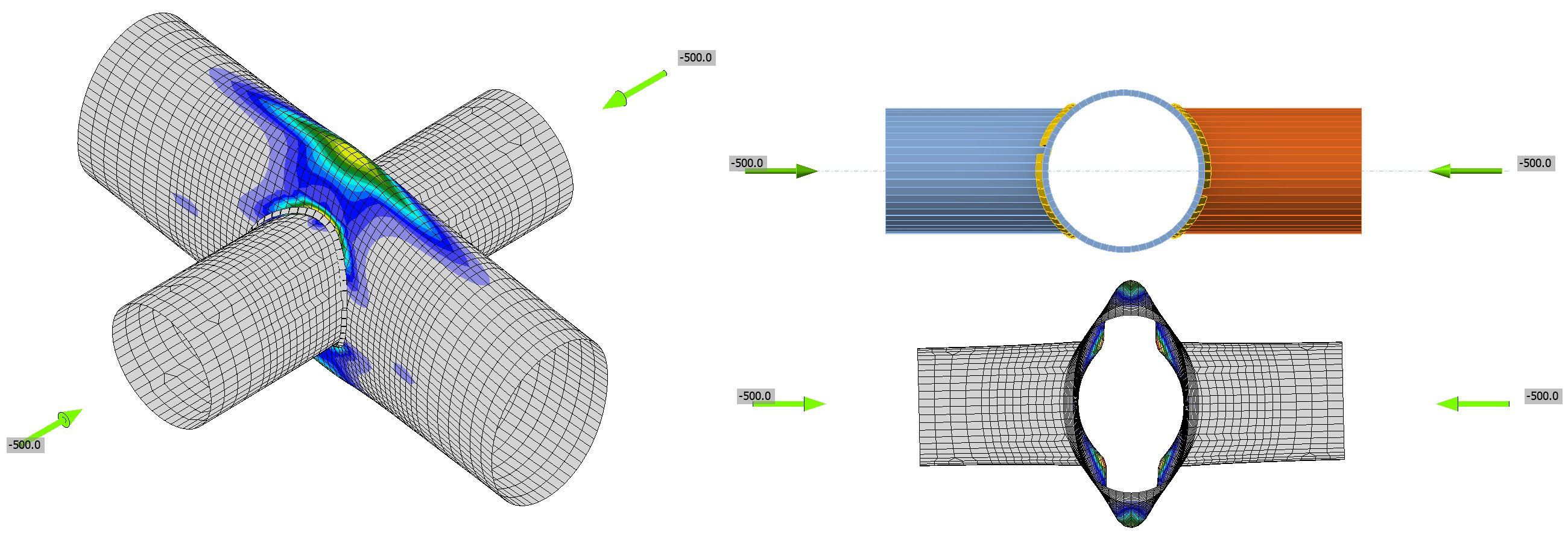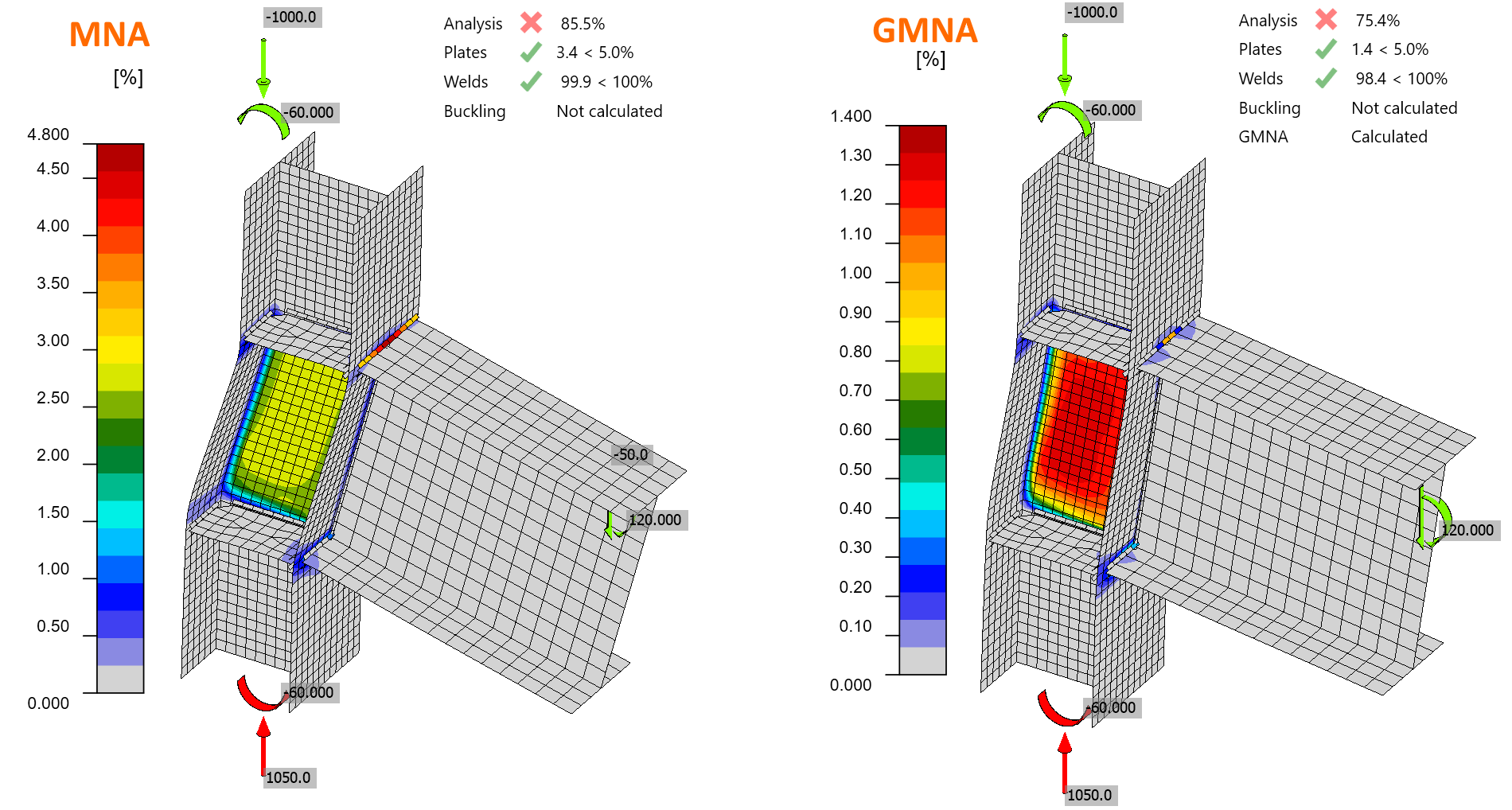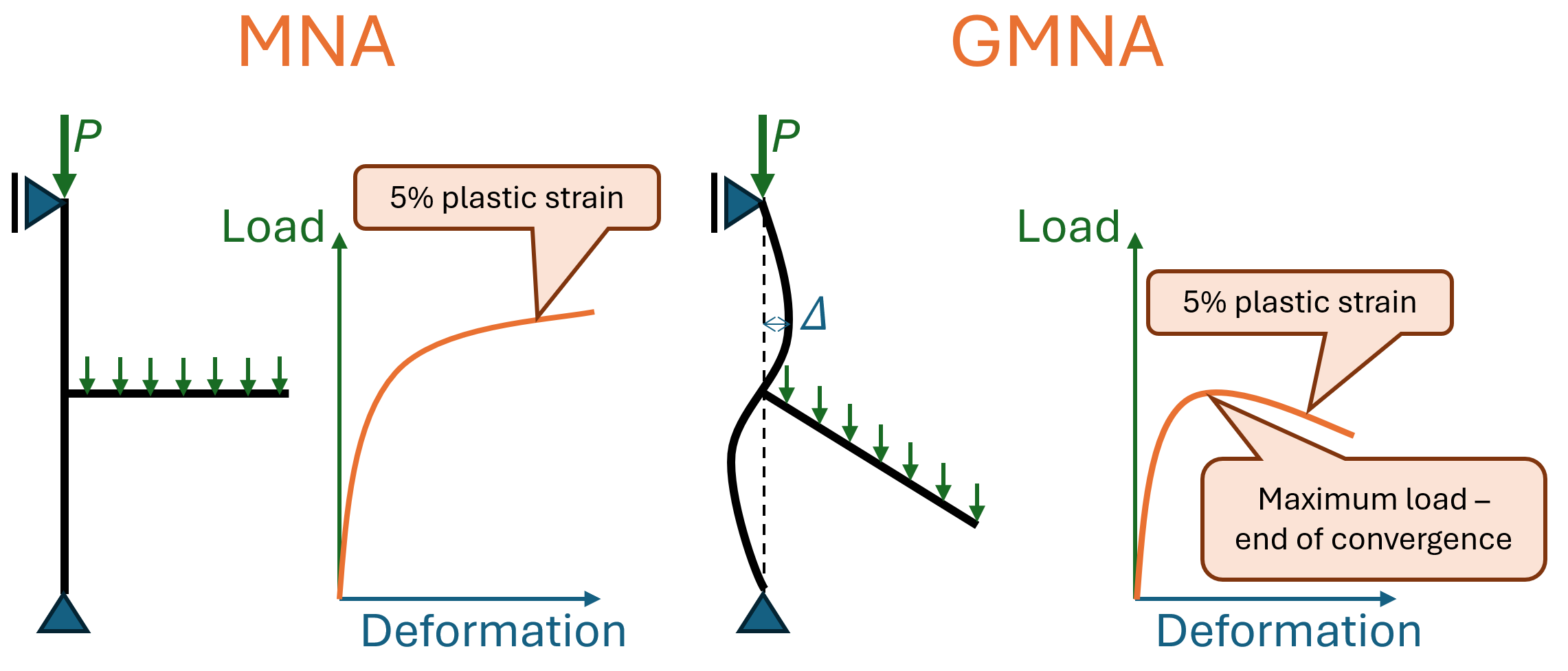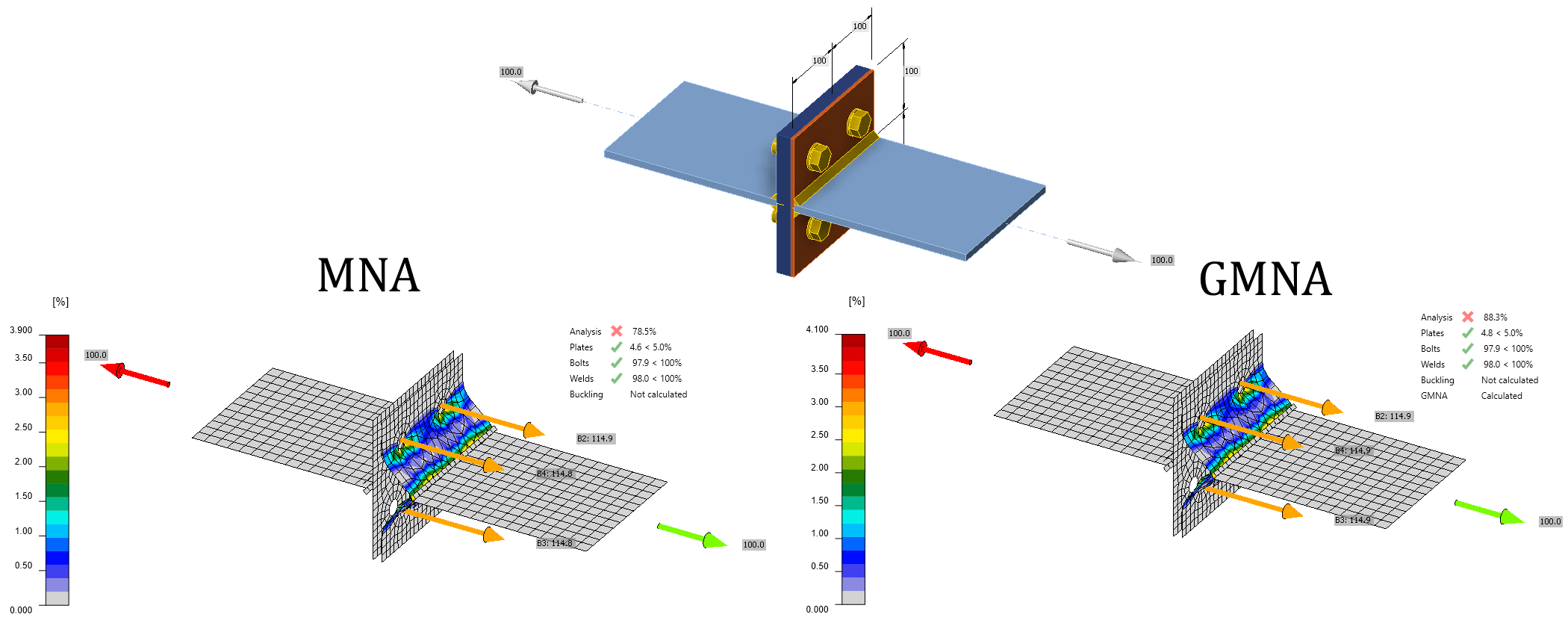GMNA Geometrically nonlinear analysis
Geometrically nonlinear analysis is typically not necessary in the design of steel connections. There are two exceptions:
- Joints of hollow sections
- Cases where buckling governs the design
Otherwise, geometrically linear analysis is sufficient with small deformations (plastic strain is below 5%) because the results with and without geometrical nonlinearity are nearly identical.
Geometrical nonlinearity is generally closer to reality but may be further from the design assumptions. It is widely used in the design of structures, e.g., frames with low buckling factor should be modeled with geometrically nonlinear analysis and sway imperfections.
Joints of hollow sections
Joints of hollow sections are susceptible to inelastic buckling. That means that as the deformation increases, the bending of plates increases. This is especially important for the most common failure modes of chord face failure and chord side wall failure. It is highly recommended to use GMNA for hollow section joints.
Cases where buckling governs the design
There are cases where buckling (and even inelastic buckling) may govern the load resistance. In such cases, GMNA provides lower resistance than MNA. The most common case is the continuous column with a large compressive force loaded also by a bending moment induced via a rigidly connected beam. The bending moment causes an instability in the column that grows with the increased load. The resistance may be achieved prior to reaching 5% plastic strain in the plates despite the buckling factor being high. In the figure below, an IPE 360 is welded to HEA 200 and \(\alpha_{cr}=5.16\).
The load resistance determined via GMNA is smaller due to so-called \(P-\Delta\) or second-order effects. Also, the load in the load-deformation curve by MNA always rises thanks to the ever-increasing load-deformation diagrams of steel material and components, so the load-resistance is determined by plastic strain or the resistance of components. On the other hand, the load curve by GMNA may also be decreasing due to these \(P-\Delta\) effects. If that happens before the failure criteria of plates and components, the load-resistance is determined as the maximum achieved load.
In these cases, which are quite common, it is really necessary to utilize GMNA to get safe results. IDEA StatiCa and ISISE ran a joint project for the verification of welded moment connections. For the investigated set of 563 models with an axial force in the column equal to 70% of column plastic axial resistance \((0.7\cdot N_{pl,Rd})\), the average reduction by using GMNA instead of MNA was 13.1%. The maximum reduction was 19.8%. The reduction of load resistance when running GMNA gradually decreases with decreasing compressive force in the column. The results may be seen in the table below. With no axial force, GMNA and MNA provide the same resistance. In the following table, the reduction is calculated as \(M_{Rd,MNA} - M_{Rd,GMNA} -1\).
| No axial force | 30% \(N_{pl,Rd}\) | 50% \(N_{pl,Rd}\) | 70% \(N_{pl,Rd}\) | |
| Number of cases | 1380 | 619 | 606 | 563 |
| Average reduction | 0.4% | 6% | 9% | 13.1% |
| Maximum reduction | 2.9% | 11% | 16.2% | 19.8% |
It is recommended to use GMNA for cases with an axial compressive force at least 30% \(N_{pl,Rd}\) of a continuous column (or chord of a truss).
Increased resistance example
An example where GMNA may provide higher resistance is a T-stub with thin plates where membrane forces are not accounted for in the analytical solution (component method in Eurocode or AISC design guides). In the following example, there are two T-stubs connected back-to-back. One plate is significantly thinner – 5 mm compared to 20 mm. The thicker one creates a nearly rigid support. GMNA provides load resistance 12.5% higher than MNA. Note that this is an extreme case and typically the results will be nearly identical. Also note that this is the real behavior proven by experiments, but it is not accounted for in traditional design methods.
FAQ
Keep in mind that geometrically nonlinear analysis is more advanced and more demanding on the solver. It may reveal some inaccuracies in your model and may require more restrictions, e.g., more careful selection of member model type.
Users are encouraged to investigate both options and see for themselves the impact of geometrical nonlinearity on the results.
Should you be worried about your previous designs that ran without geometrical nonlinearity? Only if the compressive force was really extreme. The utilization of columns according to this research is at an overall average of 0.49 with a range of 0.12–0.72, where bending moment also contributed to the column utilization. The provided example of 70% \(N_{pl,Rd}\) is, therefore, hardly feasible. Also note that Eurocode or AISC formulas disregard the axial force in the column for the component column web in shear altogether and for the column web in transverse compression and tension insufficiently, as shown in this paper. IDEA StatiCa was, therefore, not alone in insufficiently addressing this issue, and now IDEA StatiCa is the first to resolve it with GMNA.






